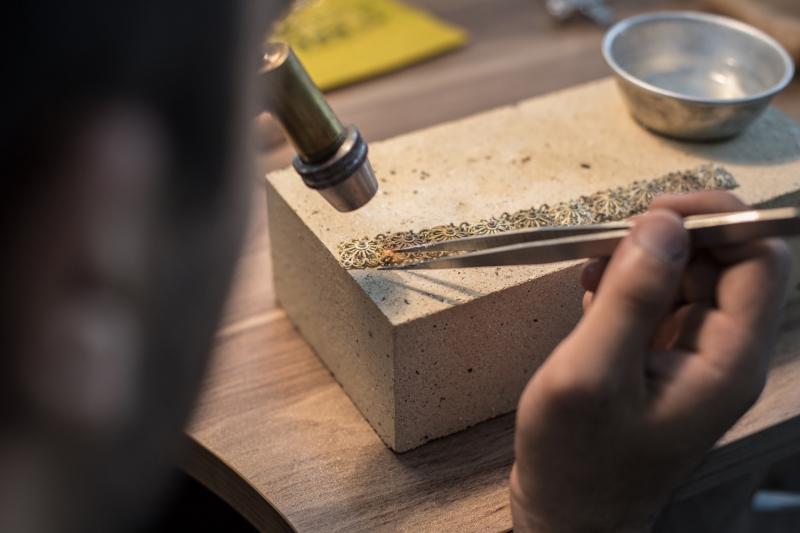The degree of purity of gold is one of the important criteria that determine the value and quality of gold. Refers to the percentage of pure gold contained in a gold alloy, usually expressed by gold karat. In this article, we will discuss gold purity, common karats, and what they mean.
24 karat gold:
24 karat gold is the highest purity of gold, containing 100% pure gold. Hence, it does not contain any other alloys. It is also known as "pure gold". However, the use of 24 karat gold in the jewelry industry may be rare due to the susceptibility of pure gold to corrosion and tarnishing.
22 karat gold:
This karat contains 91.7% pure gold and 8.3% other alloys, usually copper and silver. 22k gold is most commonly used in many cultures for making jewelry.
18 karat gold:
18k gold contains 75% pure gold and 25% other alloys. Common alloys used in this caliber are brass, silver, and sometimes zinc. 18k gold is very popular in the jewelry industry and offers a good balance between quality, durability, and corrosionability.
14 karat gold:
14 karat gold contains 58.3% pure gold and 41.7% other alloys. The alloys usually include copper, silver, and zinc. 14k gold is popular in the jewelry industry, especially for larger pieces or stronger, more durable designs.
10 karat gold:
10k gold contains 41.7% pure gold and 58.3% other alloys. This karat is considered the lowest in terms of pure gold, and is usually used for simple jewelry or low value pieces.
Other alloys are used in the gold bar to enhance gold's durability, increase its strength, and improve the ease of forming. Gold karat should be indicated in jewelry pieces usually in the form of a pendant or a small coating on the piece.
In conclusion, the degrees of purity of gold vary based on the karat, as the karat increases with the increase in the percentage of pure gold in the alloy. Choosing between different shades of gold is a personal decision based on personal preferences and the intended use of the jewelry.




